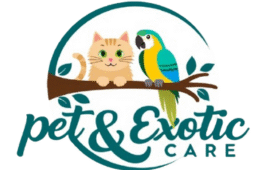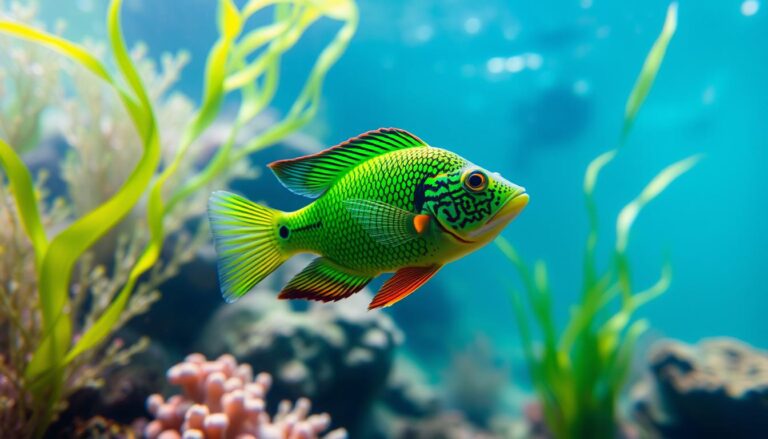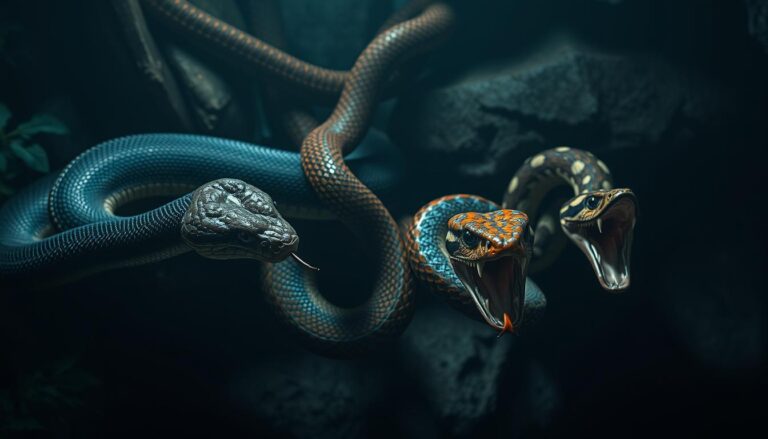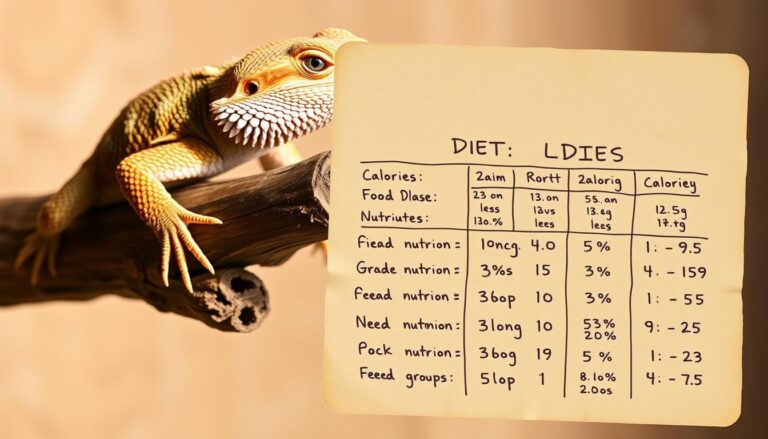Discover the Perfect Lighting for Bearded Dragons
Did you know that the right lighting setup can make or break your bearded dragon’s health? These fascinating pets rely on more than just food and water to thrive. Proper lighting plays a critical role in their well-being, from supporting their circadian rhythms to ensuring they get enough UVB for Vitamin D3 synthesis. Bearded dragons…
Did you know that the right lighting setup can make or break your bearded dragon’s health? These fascinating pets rely on more than just food and water to thrive. Proper lighting plays a critical role in their well-being, from supporting their circadian rhythms to ensuring they get enough UVB for Vitamin D3 synthesis.

Bearded dragons are diurnal creatures, meaning they are active during the day. This makes their lighting needs unique. Bright white light, ideally between 6000-7000K, not only boosts their activity levels but also improves their mental health. A well-lit environment encourages natural behaviors like basking and feeding.
Setting up the right lighting before bringing your dragon home is essential. A 14-hour daylight cycle in summer and 10 hours in winter mimics their natural habitat. Combining UVB with full-spectrum lighting ensures they receive the complete spectrum of light they need to stay healthy.
If you’re unsure about the best setup for your pet, feel free to reach out at tighfart64@gmail.com for personalized advice. Your dragon’s health is worth the effort!
Key Takeaways
- Proper lighting is crucial for bearded dragon health, especially UVB for Vitamin D3 synthesis.
- Bright white light (6000-7000K) enhances activity and mental well-being.
- Follow a 14-hour summer and 10-hour winter light cycle to mimic natural conditions.
- Set up lighting before bringing your dragon home to ensure a smooth transition.
- Combine UVB and full-spectrum lighting for optimal health benefits.
Best Lighting for Bearded Dragons: UVB Essentials
Understanding UVB lighting is essential for your bearded dragon’s health. Without it, they cannot synthesize Vitamin D3, which is crucial for calcium absorption. A lack of UVB can lead to serious health issues like metabolic bone disease, causing weak bones and deformities.
Why UVB Is Non-Negotiable
UVB lighting is not optional for reptiles like bearded dragons. It helps them produce Vitamin D3, which allows their bodies to absorb calcium from their diet. Without proper UVB exposure, they can develop metabolic bone disease, a painful and often fatal condition.
Choosing the Right UVB Bulb: Arcadia vs. Reptisun
When selecting a UVB bulb, two top choices are the Arcadia T5 HO 14% and the Reptisun 10.0. Both are highly effective, but they differ in intensity and enclosure compatibility. Here’s a quick comparison:
| Bulb | Intensity | Best For | Mounting Distance |
|---|---|---|---|
| Arcadia T5 HO 14% | High | Large enclosures | 12-18 inches |
| Reptisun 10.0 | Moderate | Small to medium enclosures | 7-11 inches |
How to Measure UVB Output with a Solarmeter 6.5
To ensure your bearded dragon gets the right amount of UVB, use a Solarmeter 6.5. This device measures the UV Index (UVI), which should be between 4.0 and 6.0 in the basking zone. Place the bulb over mesh at 7-11 inches or under mesh at 12-18 inches for optimal exposure.
Remember to replace T5 bulbs every 12 months and T8 bulbs every 6 months. Regular checks with a Solarmeter 6.5 will help maintain the correct UVB output, keeping your dragon healthy and active.
Creating the Ideal Basking Zone
The basking zone is the heart of your dragon’s habitat. It’s where they soak up warmth and UVB, essential for their health. To create this space, focus on the right distance, materials, and monitoring tools.

Optimal Distance and Placement Under Mesh
Positioning the basking spot correctly is crucial. If your enclosure has mesh, place the UVB lamp 7-11 inches above the surface. For setups without mesh, increase the distance to 12-18 inches. This ensures your dragon gets the right amount of UVB without overheating.
Basking Surface Materials: Rocks, Branches, and More
Choosing the right materials for the basking surface is equally important. Rocks and branches retain heat well, creating a warm spot for your dragon. Avoid plastic or mesh surfaces, as they don’t hold heat effectively.
Accessories like the Zen Cave are excellent for underbelly heat. They also provide a cozy spot for your dragon to rest. Always monitor the surface temperature with a digital probe thermometer to ensure it stays between 105-115°F.
“A well-designed basking area ensures your pet stays active and healthy.”
Finally, avoid flammable materials like fabric hammocks near heat sources. Safety is just as important as comfort when creating the perfect basking zone.
Balancing Heat and Light for Health
Proper temperature regulation ensures your reptile thrives in its habitat. Heat and light work together to keep your pet active and healthy. Understanding the right balance is key to creating a comfortable environment.
Daytime vs. Nighttime Temperature Needs
During the day, your pet needs a temperature gradient of 72-113°F. This includes a warm basking spot and a cooler area. At night, temperatures should drop to 55-75°F. This mimics their natural habitat and supports their immune system.
If nighttime temperatures fall below 55°F, use a ceramic heat emitter. These provide warmth without light, ensuring your pet’s sleep isn’t disturbed.
The Role of Halogen Bulbs in Mimicking Sunlight
Halogen bulbs are excellent for replicating the sun’s warmth. They emit Infrared A and B, which help regulate body temperature efficiently. Unlike colored or mercury vapor lights, halogens provide a natural spectrum of light.
For optimal results, use a 100W PAR38 halogen bulb. Brands like Arcadia and Zoo Med Repti Tuff are highly recommended. Here’s a quick comparison:
| Brand | Wattage | Best Use |
|---|---|---|
| Arcadia | 100W | Large enclosures |
| Zoo Med Repti Tuff | 100W | Small to medium enclosures |
By maintaining the right heat and light balance, you ensure your pet stays healthy and active. A well-designed habitat supports their natural behaviors and overall well-being.
Avoiding Common Lighting Mistakes
Many reptile owners unknowingly make mistakes that can harm their pet’s health. One of the most common errors is using colored bulbs, especially red lights, at night. While these may seem harmless, they disrupt circadian rhythms, confusing your pet’s natural sleep cycle. Reptiles can see red light, making it far from ideal for nighttime use.
Another mistake is relying on “full-spectrum” marketing claims. Not all bulbs labeled as full-spectrum provide the necessary UVB output. Dedicated UVB bulbs are essential for your pet’s health, ensuring proper calcium metabolism and preventing issues like metabolic bone disease.
Incorrect basking distances can also cause problems. Placing the bulb too close risks eye damage, while too far reduces UVB exposure. Always measure the UV Index (UVI) with a Solarmeter 6.5 to ensure levels are between 4.0 and 6.0 in the basking zone.
Humidity is another factor to monitor. Overly high humidity (>60%) can lead to respiratory issues. Use a hygrometer to maintain levels between 30-60%, creating a safe and comfortable environment.
Finally, don’t assume all heat lamps provide UVB. Heat and UVB are separate needs, and combining them requires careful planning. By avoiding these common mistakes, you can ensure your pet thrives in its habitat.
Your Bearded Dragon’s Lighting Checklist
Setting up the right environment for your dragon ensures they stay healthy and active. Start with a UVB bulb like the Arcadia 14% or Reptisun 10.0, mounted 12 inches under mesh for optimal exposure. Pair this with a halogen heat source to maintain basking temperatures around 100°F.
Use a Solarmeter 6.5 to measure UVB levels and an infrared thermometer to monitor basking spots. Adjust lighting cycles seasonally—14 hours in summer and 10 in winter. Avoid night lights, as they disrupt your dragon’s sleep.
For personalized advice, feel free to contact tighfart64@gmail.com. A well-planned setup keeps your pet thriving and happy.
FAQ
Why is UVB lighting essential for my pet?
UVB helps my bearded dragon produce vitamin D3, which is crucial for calcium absorption and overall health. Without it, they can develop serious health issues like metabolic bone disease.
How do I choose between Arcadia and Reptisun UVB bulbs?
Both brands are excellent, but I prefer Arcadia for its consistent output and longer lifespan. Reptisun is also reliable and widely available, so it depends on my budget and setup.
Can I measure UVB output without a Solarmeter 6.5?
While it’s possible to estimate, I highly recommend using a Solarmeter 6.5 for accurate readings. It ensures my pet gets the right UVB levels for their basking area.
What’s the ideal distance for placing a UVB bulb under mesh?
I keep the bulb 8-12 inches above the basking surface when using mesh. This ensures my dragon gets adequate UVB without overheating.
What materials work best for a basking surface?
I use flat rocks or branches because they retain heat well and provide a natural texture for my pet to climb on.
How do I balance daytime and nighttime temperatures?
During the day, I maintain a basking zone of 95-110°F and a cooler area around 80°F. At night, I let the temperature drop to 70-75°F, using a ceramic heat emitter if needed.
Why should I consider halogen bulbs for heating?
Halogen bulbs mimic sunlight effectively, providing both heat and a natural light spectrum. They’re energy-efficient and help maintain my dragon’s body temperature.
What are common lighting mistakes I should avoid?
I avoid using colored bulbs at night, placing the UVB bulb too far, or neglecting to replace bulbs every 6-12 months. These can harm my pet’s health and comfort.
What’s included in a lighting checklist for my dragon?
I ensure I have a UVB bulb, basking lamp, thermometer, and timer. Regular checks with a Solarmeter 6.5 and proper placement are also part of my routine.






